Remains of Medieval Soldier Uncovered at Bottom of Lithuanian Lake
In the depths of Lithuania's Lake Asveja, divers and archaeologists uncovered the remains of a medieval soldier, a discovery of profound historical significance. This unexpected revelation provided researchers with a rare glimpse into the lives of individuals living during the Middle Ages.
This was possible thanks to a selection of remarkably well-preserved personal effects which were found alongside the medieval soldier. These items hinted at his potential ties with a castle of unique significance in the region during medieval times.

Asveja Lake bridge, with Dubingiai Castle hill in the foreground, as seen from above. The remains of a medieval soldier were found underwater within Asveja Lake. (Top Lithuania / Adobe Stock)
Archaeological Excavations of Lake Asveja
Lake Asveja is the largest and third deepest lake in Lithuania. It is also known as Dubingiai Lake, due to the now ruined 15th century Dubingiai Castle which was built on an island within the lake.
- Early Neolithic Settlement Found Underneath the Waters of Lake Bracciano
- Challenges and Triumphs in Underwater Archaeology
According to The Baltic Course, the lake “has been intermittently explored using underwater archaeological methods since 1998.” During this time, many finds have been retrieved from the waters, including the remains of boats and possibly a ferry. Artifacts from the 16th and 17th century have also been located.
Surprisingly enough, the team also encountered the remains of the original poles of what has become known as the Old Dubingiai bridge. These were found not far from a present-day bridge that is still in use.
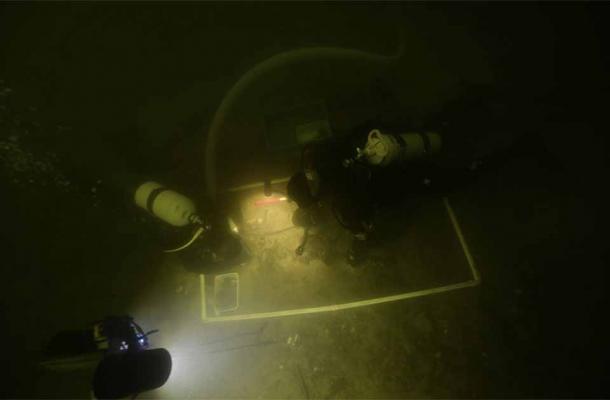
Underwater archaeologists examining the artifacts in Lake Asveja, Lithuania. (G. Krakauskas)
A Medieval Soldier Buried in the Mud and Sludge
The medieval soldier was uncovered during archaeological explorations of Lake Asveja back in 2020. Recovered “under a layer of mud and sand at a depth of nine meters [29.5 ft],” according to archaeologist Elena Pranckenaite in LRT English, it was an incredible find by any standard.
A floating water pump was used to carefully remove the silt and sediment from the human remains. Pranckenaite told LRT English that “the underwater find, which was not a burial, was unique and the first of its kind in Lithuania.”
“According to initial investigations by anthropologists, the discovery is said to be the remains of a young man,” reported Sputnik News. Based on the artifacts found surrounding the human remains, they concluded that the young man was a medieval soldier.
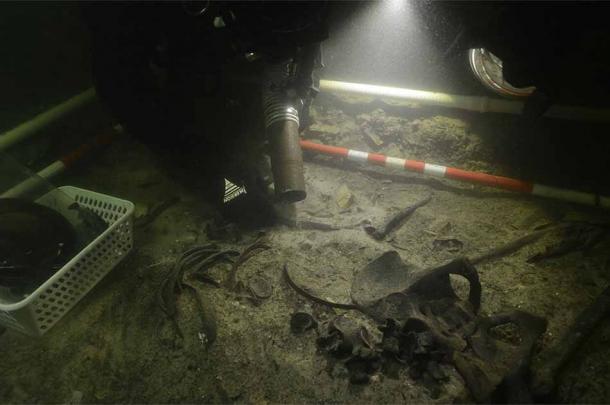
Recovering the medieval soldier’s remains from Lake Asveja. (G. Krakauskas)
Artifacts Identify Human Remains as Those of a Medieval Soldier
Alongside the remains of the medieval soldier, the archaeologists uncovered artifacts indicative of his vocation: a sword, two knives and various leather objects, including straps. They also discovered that he had died wearing sturdy leather boots.
Remarkably preserved within the sediment of the lake floor, these relics have captivated divers and archaeologists alike. The underwater objects offered poignant insights into the life and accoutrements of a medieval warrior.
Anthropologists could not estimate the date of the remains from a study of the bones. However, analysis of the sword and other objects allowed experts to identify the period when the medieval soldier was alive. BNS reported that “these finds can be dated to the 16th century.”
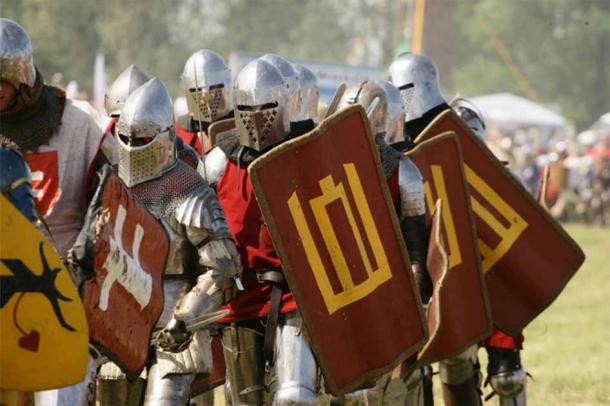
Representation of Lithuanian medieval soldiers in a re-enactment. (GNU Free Documentation License)
This was the time when the Grand Duchy of Lithuania was one of the most powerful states in Eastern Europe and controlled lands as far south as Ukraine. The Duchy was in a dynastic union with the Kingdom of Poland.
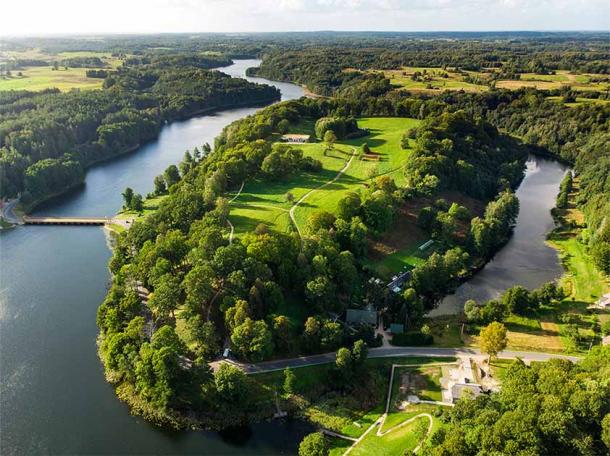
Aerial landscape of Dubingiai Castle Hill, formerly an island and now a peninsula, located next to Lake Asveja in Lithuania. (MNStudio / Adobe Stock)
Medieval Soldier Was Found Near Dubingiai Castle
LRT English reported that the cause of death had “not yet been determined.” However, the remains were located near the 15th-century Dubingiai Castle, a fortress which today lies in ruins. This was one of the most important fortresses in the Baltics, whose function was to protect Lithuania from attacks launched from nearby Livonia.
How and why the medieval soldier met his demise is a 500-year-old mystery. Historians have hypothesized that he either died during battle or drowned, but the answer may never be known for certain. It's plausible he served in the castle garrison, but confirmation eludes us.
His tale remains a cryptic puzzle, obscured by the passage of time.
- Sonar Spots Up To 700-Year-Old Shipwreck Deep in Norwegian Lake
- Maya City Sunk in Lake Atitlán Explored By Underwater Archaeologists
The underwater discovery of the medieval soldier highlighted the archaeological importance of Lake Asveja. Experts moved the remains for further examination at the University of Vilnius, so that a multidisciplinary team would be able to study the bones. The stated plan was to then transfer the remains to the Lithuanian National Museum for treatment and conservation.
Top image: The medieval soldier’s remains were found in Lake Asveja, Lithuania. Source: A. Matiukas
By Ed Whelan
















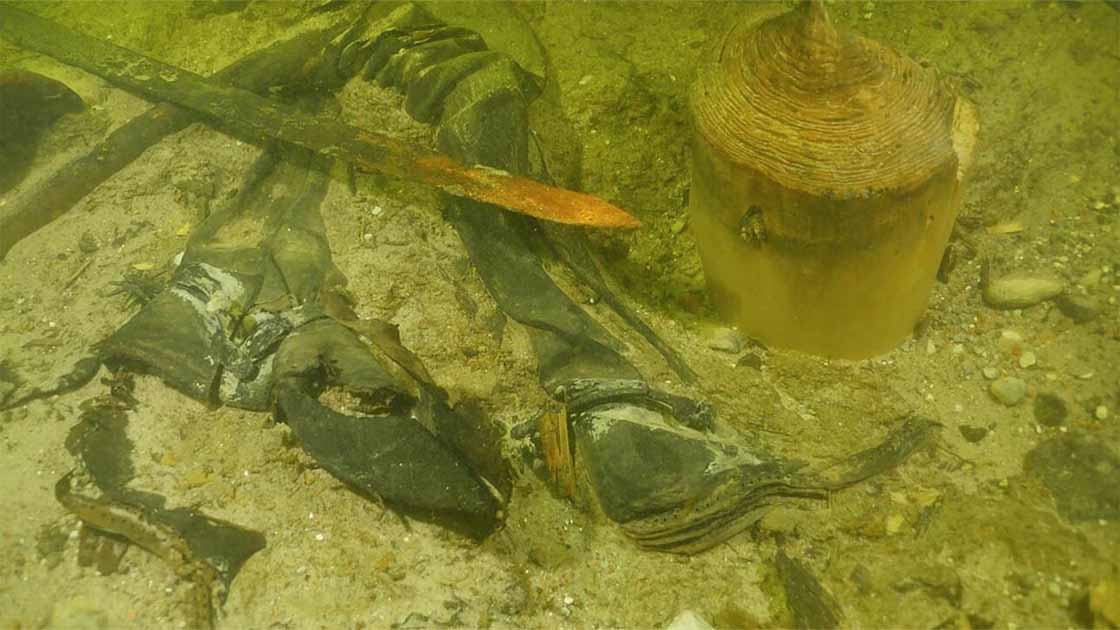

Comments
A stunning find. I can’t wait to get more details and pictures.